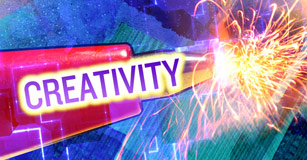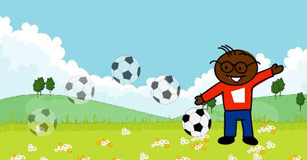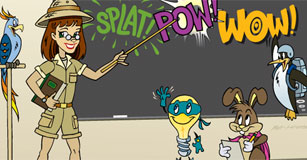Creating Illustrated Animations is Easy
Creating animations can help students grasp concepts that are difficult to explain with text

If you are familiar with stop-motion and classical animation, you know that working frame by frame can be time– and labor–intensive. Many teachers are reluctant to use animation in the classroom due to time constraints, yet we realize that students store knowledge in linguistic and visual form. According to Marzano’s research, having students create visuals to supplement text can better help them internalize and later recall information.
Building animations is especially useful in helping students grasp concepts that are difficult to explain using text alone. In science, for example, students can demonstrate the process of chemical bonding, showing what the process looks like at the atomic level. In math, learners can demonstrate how algebraic equations relate to lines and points on a coordinate plane. Illustrating characters from a novel helps students visualize descriptive written information, and recording narration to accompany animations for these characters helps students realize the importance of voice and perspective.
So how do you get started creating animation without allocating hours and hours of classroom time? There are certainly many techniques and procedures you might use for animation, but you can use the illustration features a creativity tool like Wixie to get started immediately. The hardest step is to simply begin, so jump in and work to refine your procedures and build your skills during the process.
If you are comfortable giving your students complete control of the animation process, and are willing to accept the fact that they will inevitably know more about whatever tool you are using than you do, follow the steps that Amy Clark from Midlothian, Texas, developed for creating animations with her first graders:
- Draw something.
- Clone (duplicate) the page.
- Change something.
These simple, non-threatening steps encourage a culture of fearless exploration and risk taking in Amy’s classroom, and the steps are certainly easy enough to try out in yours!
Using any creativity or animation tool requires some initial instruction. When Ms. Clark’s students first started animating, she did much of the computer work for them. In a first class project, students studied the development of America by reading biographies. As they read, they wrote down three things they learned and used illustrated each one. Then, they chose a favorite image, duplicated it, and made small changes to the copy.
Ms. Clark helped her students record narration, and then the students duplicated just two images to make longer animations that matched their narration, ultimately combining their work into a class movie on the history of America.
Animations and movies rely on the illusion of movement. How do students know what to move and change to create this illusion? Demonstrate to your students that even subtle differences between frames in an animation can suggest movement or change. You will have at least one visual learner in your classroom who will be able to do this intuitively. Use that student as an expert who can make suggestions to other students.
Joseph Oliveras
When Joseph Oliveras, a student at Denn John Middle School in Kissimmee, Florida, began working with his art and technology teachers to transform the storyboards into stop-motion clay animations, his talent was obvious. When Jeremy Jackson, from Tech4Learning, showed him how to use the Frames drawing tools, he began manipulating the shapes he was drawing to develop animations as good as those you see on Saturday morning. Watching his animations, it becomes obvious that Joseph's dream of becoming a producer at an animation studio is sure to become a reality!

To make a character appear to wink in an animation, you could spend hours developing a number of frames showing its eyelid in several different positions. However, a simple two-frame animation is more than adequate to convey this action. Create a frame with the eye open, and another with the eye closed, and your brain will interpret the change as a wink. Studios that produce Saturday morning cartoons only create six to eight frames of animation per second, instead of the 24 frames per second used by motion pictures, because they know that the viewer’s brain will fill in any missing movement.
Remind your students that animating actions like waving, blinking, and talking can be conveyed using just a few frames. The animator needs only to create a few frames with different positions, such as a partially open mouth, a fully open mouth, and a closed mouth, and trust that the animation will effectively convey that the character is speaking.
However you begin, you and your students are sure to be hooked by this powerful visual medium!















